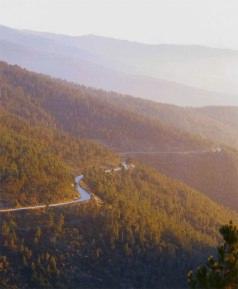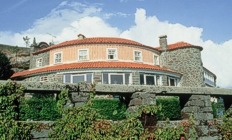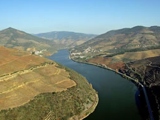
MARAO, PortugalSpring is one of the most spectacular times of the year to come, when the hillsides covered in Broom turn bright yellow. In Portugal Broom is quite special and referred to as the May plant. On the evening prior to the 1st of May, the villagers follow the tradition of adorning their doors and windows with Broom in the belief it will keep the devil away for a whole year. If being active while on holiday is high on the agenda, there are several activities you can take part in such as bicycle tours, country walks and golf. There is also no shortage of interesting day trips you can take as well and through some of the most wonderful scenery. 
One such trip is to 4th century town of Amarante. Its turreted buildings give it an almost fairytale quality, enhanced by a beautiful 14th century arched bridge, Ponte Sao Goncalo, that crosses over the river that runs through it. The bridge was actually quite pivotal in keeping the French at bay during an attack in the 19th century. This particular part of the riverside is where you will also find many of the popular cafes and restaurants, making it an ideal spot to stop for lunch. Amarante is the burial place of a Saint who lived during the early 2nd century and had an extraordinary ability to heal the sick. His tomb is found in a chapel within the San Goncalo Monastery. If you are visiting the Monastery close to sunset, you will see it turn a lovely warm orangey colour as the sun begins to go down. This is because of a property in the granite stone. Amarante was also home to the 20th century cubist artist, Amadeo de Souza Cardosa. Most of his works are actually exhibited in Paris, but there is a small display in the local museum in town.  From Amarante you can continue through the valley along the Tamega River to Livracao, or change to the main line and travel along the Douro River to Regua, the centre of the port wine growing region. There is also a lovely train ride that takes you up the Corgo River to Vila Real, and is considered one of the most interesting train journeys in Europe.
From Amarante you can continue through the valley along the Tamega River to Livracao, or change to the main line and travel along the Douro River to Regua, the centre of the port wine growing region. There is also a lovely train ride that takes you up the Corgo River to Vila Real, and is considered one of the most interesting train journeys in Europe.
Vila Real is the birthplace of Diogo Cao, the famous explorer who discovered the Congo River in 1482. He was born in a house on the main square, but his eventual house of residence was the Mateus Palace 4km outside of town. This fine example of the Baroque style of architecture in 1700ís actually features on the label of Mateus Rose wine, and impressive both inside and out. Furnished with 18th century paintings, there are also stunning examples of Portuguese china and silver. Outside is one of the most beautiful gardens in Europe with a 35m long cedar tunnel. Other places of interest to visit in Vila Real, is the 19th century Town Hall and the Tourist Office with its attractive Manueline windows. The 15th century Cathedral has a very modest exterior and used to be part of the Dominican Monastery. Whereas the towns finest church is the Sao Pedro, beautifully decorated with colourful tiles and carved ceilings. There is also the Capela Nova, which is a sweet little chapel built by Nicolau Nazoni who was involved in the construction of the Mateus Palace. With so much to see and do in the area, returning to the relaxing atmosphere of Marao will be most welcome at the end of a long day. Although there are trains and buses available to many of the places mentioned earlier, you might wish to explore car hire as well, especially as the nearest airport is Porto which is over 80km away. |